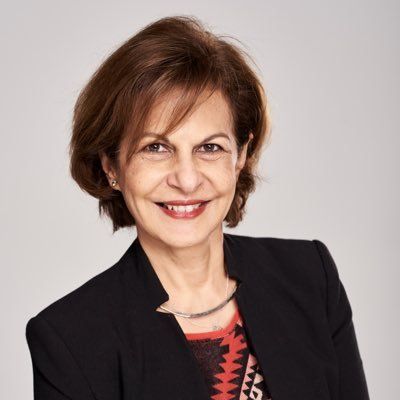It’s time to stop talking and start developing Africa’s infrastructure
Frankly Speaking
Managing Director at New Horizons Project
Infrastructure development in Africa requires urgent international action.
African economies have shown an impressive resilience in recent years. Yet sustained and inclusive growth requires more and better access to funds and stronger coordination of international, public, private and national investments in Africa’s critical energy, water, sanitation, transport, health, education and telecommunications sectors.
The good news: more and more international organisations, development agencies and individual states are paying attention to development opportunities and challenges in Africa, including the building and upgrading of infrastructure connectivity across the continent.
The bad news: Africa’s infrastructure needs amount to $130–170 billion a year, with a financing gap in the range of $68–$108 billion. This means ensuring access to more financing but also better coordination among the various development actors and investors in Africa.
Africa’s leading foreign partners must also work together more actively to coordinate their investments in African infrastructure
Economic growth in Africa is set to accelerate strongly in 2018 to reach 4.1%, compared to 3.6% in 2016. But sustained development across the continent requires “massive investments” in critical infrastructure, according to African Development Bank (AfDB) President Akinwumi Adesina. Lack of adequate infrastructure means that although Africa accounts for 12% of the world population, it generates a mere 1% of global GDP and only 2% of world trade. Poor road, rail and harbour infrastructure adds 30 to 40% to the cost of goods traded among African countries. The World Bank estimates that lack of infrastructure in Africa reduces economic growth by 2% and business productivity by as much as 40% every year.
Unlike a few years ago, African countries have a wide variety of financial options which go well beyond foreign aid. Africa now collects about $500 billion in tax revenue every year, $50 billion in foreign aid, $60 billion in remittances, and $60 billion in foreign direct investment inflows. More than $100 trillion is managed by institutional investors and commercial banks globally.
But easier access to funding is not enough. African governments must also put in place effective institutional arrangements to manage the complex tasks of project planning, design, co-ordination, implementation, and regulation. They also have to focus on the soft side of infrastructure development ‒ on tackling the big policy and regulatory issues, on training the teams assembling the financing packages, and on conducting constant research to keep up with the knowledge frontier.
Job creation is a key challenge. While growth is picking up, jobs are still scarce, with women and young people most affected by slow growth in employment. Creating jobs for the 12 million young Africans entering the workforce every year requires that Africa take a fast-track to industrialisation, including in the important agricultural sector, which in turn requires removing key obstacles in infrastructure, such as energy, water and transport.
Africa is moving up the global agenda. The EU-Africa Summit held in Abidjan last December, dominated as it was by fears of increased migration from Africa, focused on investing in the continent’s young people. China, India and Japan hold their own summits with African leaders while their investors are busy looking for potential projects across the continent. The competition for good projects – and Africa’s resources – is set to become even fiercer.
Competition is good, but Africa’s leading foreign partners must also work together more actively to coordinate their investments in African infrastructure. The European Union’s External Investment Plan which foresees the mobilisation of €44 billion in private investment for Africa and neighbourhood countries by 2020 provides one avenue for increased cooperation with other donors and investors. So do similar blueprints developed by Africa’s other key partners.
Creating jobs for the 12 million young Africans entering the workforce every year requires that Africa take a fast-track to industrialisation
China is clearly a top investor in Africa – and has been for some time. President Xi Jinping’s ambitious Belt and Road Initiative (BRI) looks set to take China’s economic engagement with Africa to a new level.
Japan’s relations with Africa go back a long way as well. The first Tokyo International Conference on African Development (TICAD) was held in 1993. While the initial focus was on aid, the emphasis now is on encouraging more Japanese companies to invest in Africa. Prime Minister Shinzo Abe’s “Free and Open Indo-Pacific Strategy” aims at strengthening connectivity between Asia and Africa and identifies the Indian Ocean as a “global commons” subject to the rule of law. Japan has also highlighted the importance of investing in “quality infrastructure”, covering high construction standards but also good governance, transparency and accountability of investments. Japan and India are working together on the construction of an Asia-Africa Growth Corridor aimed, among other priorities, on cultivating value chains between the two regions.
The recent finalisation of an enhanced EU-Japan partnership agreement means that Europe and Japan could embark rather quickly on connectivity cooperation in Africa. With connectivity also identified as a prime theme for discussion at the 12th Asia Europe Meeting (ASEM) in Brussels on 18-19 October, EU-Japan cooperation on building Africa’s infrastructure would be a good first step and a striking example of how Europe and Asia could work together – and learn from each other ‒ in efforts to promote African development.
Stay informed
